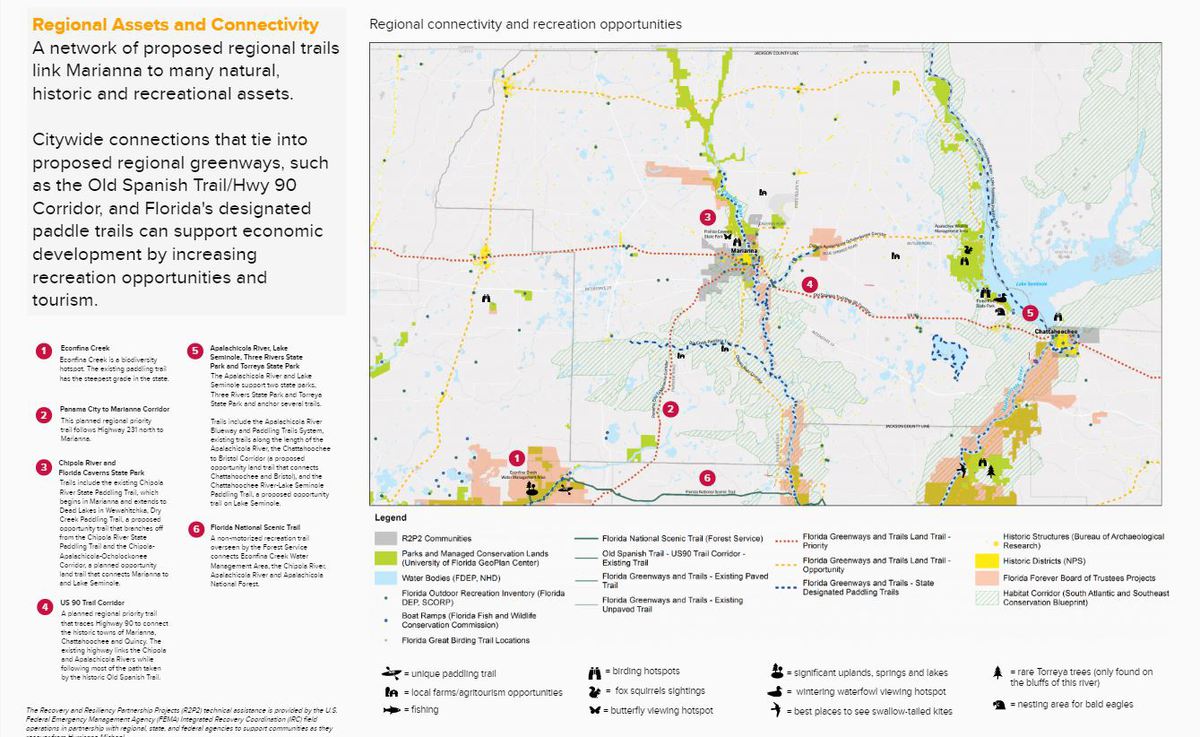Panhandle rising - How small cities in Florida are working together to rebuild for resilience

An update on Louise’s blog, “The Blueprint and building resilience”, from September 2020
From face masks to flooding, 2020 has changed our ideas of what’s normal. As the this year’s record-breaking Atlantic hurricane season ends, many coastal communities find themselves preparing for a climate future that shares few resemblances with the past. While some larger coastal cities are already employing strategies to mitigate rising seas and more intense storms, other towns don’t have the resources to invest in expensive actions like building sea walls or protecting hundreds of acres of marshlands. But storms don’t care about who has resources or the best-laid plans.
This year alone, all but six counties along the entire U.S. East Coast experienced tropical storm or hurricane force winds. And out of the six counties that escaped this year, some are recovering from previous years’ storms. More and more, many small coastal communities are finding themselves the unwilling pioneers of planning. They are tasked with trying to rebuild after storm damage while reenvisioning for what is to come. Through partnerships and regional collaborations, some cities are finding ways to rebuild for the resilience they need.
Hurricane Michael, a Category 5 storm, pummeled the Florida panhandle in 2018. This was the first Category 5 hurricane to make direct landfall in Florida’s panhandle, a region historically spared from hurricanes. Six cities in particular (Mexico Beach, Marianna, Parker, Springfield, Chattahoochee, and Quincy) found themselves facing unimaginable loss. Mexico Beach, one of the hardest hit cities, endured wind speeds of 160 miles per hour and a 14-foot storm surge. In the City of Parker, which has a population of just over 4,000 people, almost every structure sustained damage. The cost of recovery, estimated at $14 million, was double the city’s annual budget. One person described the City of Springfield as, “It’s like a bomb’s been dropped.”
For these towns, rebuilding and replacing is not a straightforward task. The economies that helped support the region in the past may not be as viable as they were in the future. For example, the Florida Caverns State Park by the City of Marianna lost between 80-90% of its trees in Hurricane Michael. A nearby farm lost most of its 3,800-acre loblolly pine timber crop. In rural areas where farming and silviculture make up a large part of local economies, what does the future of agriculture look like when facing more frequent and higher intensity storms?
Facing the task of recovery on such a grand scale, these six cities in the Florida Panhandle are working together and with the Federal Emergency Management Agency (FEMA) to think beyond their boundaries to rebuild and improve resilience within their communities, their environment, and their economies. These cities are laying the framework to revitalize their downtowns, build trails to connect to parks and greenspaces, increase their stormwater resilience, and support local economies and the region’s long-term recovery.
FEMA supports initiatives to connect communities with experts from federal agencies in order to provide technical resources to help rebuild and recover in ways that will increase the community’s ability to withstand future hurricanes. Working with FEMA, Mexico Beach, Marianna, Parker, Springfield, Chattahoochee, and Quincy participated in the Recovery and Resiliency Partnership Project (R2P2), which provided technical assistance to support the recovery. Through the R2P2 and working with the consulting firm Skeo, each city developed a vision for long-term economic recovery using design concepts and strategies that integrate recreation, stormwater management, community connectivity, and downtown development.
Beyond establishing their visions of infrastructure and community identities, the cities began to collaborate and lay the groundwork for a regional recreation economy by promoting their history and cultural identity, unique regional landscape, and green assets. While the cities created visions for their downtown corridors, they also looked at assets that could draw visitation to the wider region. For example, they used the Southeast Conservation Blueprint to help identify ecological connections across the wider region and to show linkages between the cities and natural resource assets. The idea is to create multiple experiences—like enjoying local shopping, biking, and visiting historic sites—to draw visitors to the area and for the cities to cross promote themselves and each other.
The R2P2 project culminated in a three-day virtual summit held in October. The summit focused on developing a regional recreation economy; Scott Turner, the Executive Director for the White House Opportunity and Revitalization Council, provided the keynote address. Other speakers presented capacity and partnership opportunities specific to the regional economy, ecosystem and watershed resilience, and historical and cultural resources.
Currently, an action plan is underway that lays out clear steps for each city and other stakeholders to further this effort. Throughout the summit and R2P2 project, each city recognized that leveraging partnerships is critical to make the vision of this area of the Panhandle a reality. For one, these cities need more capacity in order to take actions towards the regional vision of a recreation economy. By offering these cities support in using the Southeast Blueprint to clear barriers to action, the Southeast Conservation Adaptation Strategy (SECAS) hopes to contribute to that capacity need.
As record-breaking storm seasons become the new normal, regional resilience will become more vital to long-term success. To prepare, communities will need to plan and partner beyond their municipal boundaries. As a shared plan, the Blueprint can help support these partnership efforts to strengthen green infrastructure and find ways for communities to connect to each other and support a recreation-based economy.
If you’re interested in using the Southeast Blueprint to explore resilience strategies, contact the user support lead for your state.